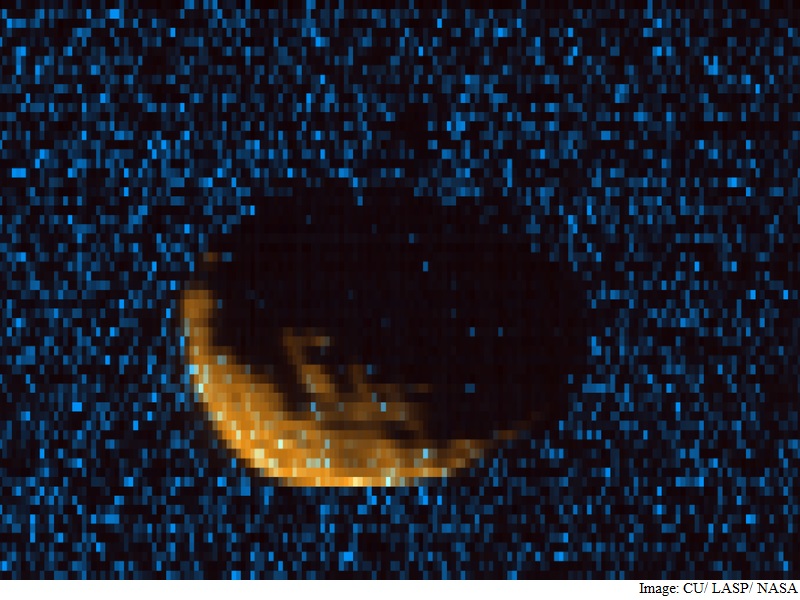- Home
- Science
- Science News
- Nasa's Maven Probe Observes Mars Moon Phobos in New Light
Nasa's Maven Probe Observes Mars Moon Phobos in New Light

In late November and early December 2015, Nasa's Mars Atmosphere and Volatile Evolution (Maven) mission made a series of close approaches to the Martian moon Phobos, collecting data from within 500 kms of the moon.
Among the data returned were spectral images of Phobos in the ultraviolet.
The images will allow Maven scientists to better assess the composition of this enigmatic object whose origin is unknown.
Comparing Maven's images and spectra of the surface of Phobos to similar data from asteroids and meteorites will help planetary scientists understand the moon's origin - whether it is a captured asteroid or was formed in orbit around Mars.
The Maven data, when fully analysed, will also help scientists look for organic molecules on the surface.
Evidence for such molecules has been reported by previous measurements from the ultraviolet spectrograph on the Mars Express spacecraft.
The observations were made by the Imaging Ultraviolet Spectrograph instrument aboard Maven.
Maven's principal investigator is based at the University of Colorado's Laboratory for Atmospheric and Space Physics while Nasa's Goddard Space Flight Center in Greenbelt, Maryland, manages the Maven project.
Catch the latest from the Consumer Electronics Show on Gadgets 360, at our CES 2026 hub.
Related Stories
- Samsung Galaxy Unpacked 2025
- ChatGPT
- Redmi Note 14 Pro+
- iPhone 16
- Apple Vision Pro
- Oneplus 12
- OnePlus Nord CE 3 Lite 5G
- iPhone 13
- Xiaomi 14 Pro
- Oppo Find N3
- Tecno Spark Go (2023)
- Realme V30
- Best Phones Under 25000
- Samsung Galaxy S24 Series
- Cryptocurrency
- iQoo 12
- Samsung Galaxy S24 Ultra
- Giottus
- Samsung Galaxy Z Flip 5
- Apple 'Scary Fast'
- Housefull 5
- GoPro Hero 12 Black Review
- Invincible Season 2
- JioGlass
- HD Ready TV
- Laptop Under 50000
- Smartwatch Under 10000
- Latest Mobile Phones
- Compare Phones
- OPPO Reno 15 Pro Max
- Honor Win RT
- Honor Win
- Xiaomi 17 Ultra Leica Edition
- Xiaomi 17 Ultra
- Huawei Nova 15
- Huawei Nova 15 Pro
- Huawei Nova 15 Ultra
- Asus ProArt P16
- MacBook Pro 14-inch (M5, 2025)
- OPPO Pad Air 5
- Huawei MatePad 11.5 (2026)
- Xiaomi Watch 5
- Huawei Watch 10th Anniversary Edition
- Acerpure Nitro Z Series 100-inch QLED TV
- Samsung 43 Inch LED Ultra HD (4K) Smart TV (UA43UE81AFULXL)
- Asus ROG Ally
- Nintendo Switch Lite
- Haier 1.6 Ton 5 Star Inverter Split AC (HSU19G-MZAID5BN-INV)
- Haier 1.6 Ton 5 Star Inverter Split AC (HSU19G-MZAIM5BN-INV)

















